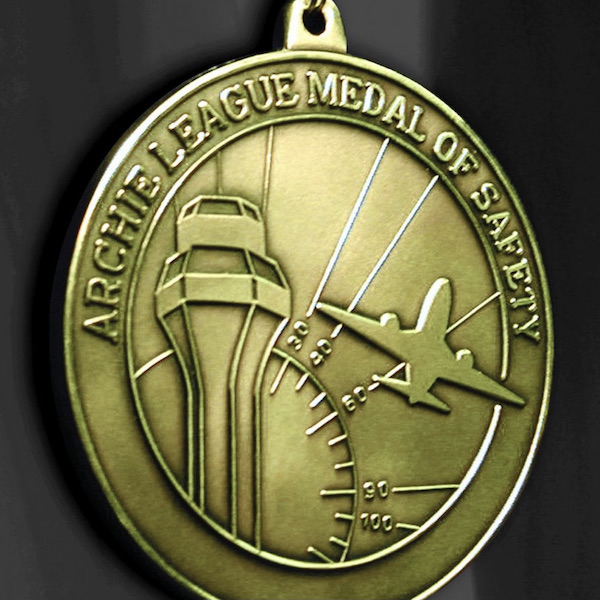
2021 Archie League Award Spotlight: Jeremy Hroblak, Scott Moll, and CJ Wilson, Los Angeles ATCT (LAX)
Around 3:30 a.m. on Aug. 19, 2020, the crew of FedEx Flight 1026 (FDX1026), on approach to Los Angeles International Airport (LAX), notified LAX member Scott Moll that they needed to conduct a go-around due to an unsafe landing gear indication. As any tower controller can tell you, this isn’t uncommon and usually ends with the pilots taking a little time to work out the issue and then returning for an uneventful landing.
With that in mind, and adhering to normal procedures, FDX1026 was vectored out over the Pacific Ocean to work the problem. At this point, numerous challenges began to present themselves for this flight. The first was relatively small. After some time, the pilots asked for a low approach at 1,000 feet over the runway to get a visual confirmation as to the status of the gear. But the darkness and the height of the aircraft above the tower made it nearly impossible to confirm what Moll and his ground controller, CJ Wilson, thought they saw. The left main landing gear appeared to be retracted.
Moll began to coordinate a second low approach with Southern California TRACON (SCT), this time at 300 feet above the runway. Wilson and Moll coordinated with airport operations to get vehicles on the field, and with another FedEx crew that had just landed, to assist in visually inspecting the landing gear to ensure as many eyes as possible would be on that aircraft as it made a low approach. It was confirmed: the nose and right main gear was down but the left main gear was still up.

Another large challenge appeared at this point. Having exhausted all their options, the crew of FDX1026 determined they would have to attempt an emergency landing. The two controllers knew that the workload in the tower was about to increase exponentially. So, they recalled Jeremy Hroblak back from his break to conduct the immense amount of coordination and communication associated with the controller in charge position.
The crew of FDX1026 requested the longest runway at LAX, runway 25R. But another challenge presented itself because the runway was closed due to the city venting gas from a complex on short final for that runway. None of the three controllers on duty that night had ever seen the city do this venting procedure before, or since. But on that night, it had an impact.
When Hroblak arrived in the tower, he coordinated with the city to halt the venting and make runway 25R available for the stricken Boeing 767.
Yet another issue had been lingering for nearly a week prior to Aug. 19. The crash phone, used to summon the Aircraft Rescue and Fire Fighting crews, was out of service, which complicated the required, and urgent, Alert 2 notification. An Alert 2 indicates that an aircraft is having major difficulties. Jeremy got in contact with the fire captain on his personal cell phone and utilized that means of communication throughout the event.
An immense amount of coordination occurred over the next few tense minutes leading to FDX1026 making an emergency landing on runway 25R, just after 4 a.m. The flight crew abandoned the aircraft on the runway due to the potential for fire, and both survived, though one did suffer a broken leg while using the escape ladder.
Despite the numerous challenges presenting themselves, Moll, Hroblak, and Wilson, through their skill and professionalism, were able to address them all, contributing to the most successful outcome possible.
The captain of FDX1026, Bob Smith, wrote a letter describing the event from his perspective. He concluded the letter by saying, “As we say at FedEx to a team member for a job well done … Bravo Zulu! Thank you for your professionalism, and for your significant contribution to an aircraft incident that, because of your actions, ended with a safe landing and minimal damage to our aircraft.”
NATCA is happy to report that the crash phone was repaired the very next day.
This is the second Western Pacific Region Archie League Medal of Safety Award-winning event from LAX, joining Michael Darling’s award-winning save in 2007.

